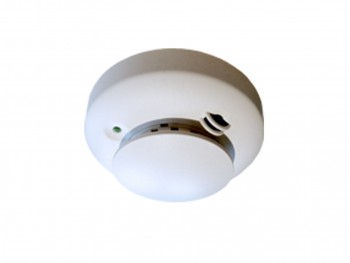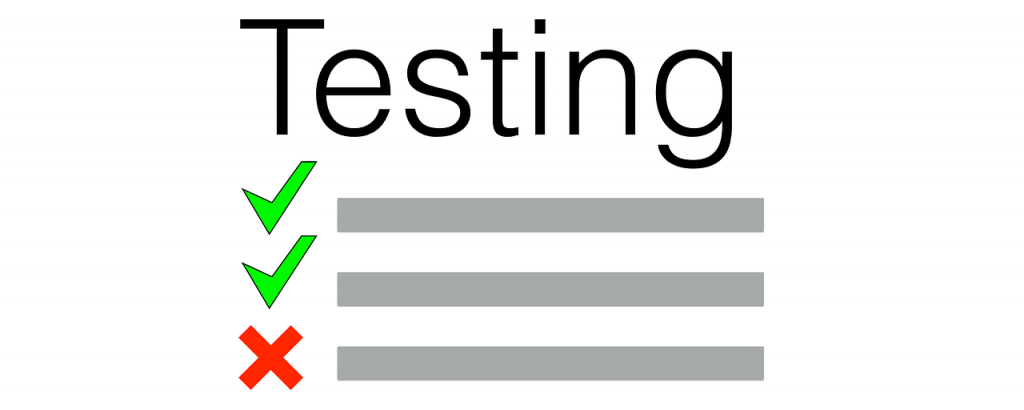If you’ve read our blogs regularly, you’ve likely noticed that we frequently discuss the benefits of adding monitored smoke and carbon monoxide (or “CO”) detection to your property. Whether you own a home or business, this equipment provides some important security features. For starters, monitored fire security equipment creates a fire department dispatch upon detecting a fire or CO-related emergency. Of course, this can save your home or business if these events happen with no one present. More importantly, this equipment and the emergency dispatch it creates can save lives when fires trap individuals inside a building. However, installing this equipment only represents half the battle. From there, customers must take good care of the equipment that takes care of them. In this post, we share some valuable tips for properly maintaining your smoke and CO detection.
First, we’ll share how this equipment works so you can further understand all of its benefits. From there, we’ll examine how designing your life safety system carefully can help keep your life safety equipment working for years to come. Then, we’ll also share some tips on how to test these security devices. This includes both testing your equipment’s notification abilities, as well as testing them for proper smoke and CO detection. Finally, we’ll look at another type of fire equipment testing that fits legal national standards for monitored fire equipment testing. Now, let’s get started by exploring the benefits of monitored smoke and carbon monoxide detection.

Monitored smoke detectors, such as this one by System Sensor, can create a fire department response to a fire at your business or your home.
The Benefits of Monitored Smoke and CO Detection
As we mentioned above, adding monitored smoke and carbon monoxide detection creates tremendous security benefits. However, you may be asking yourself, “What exatly does it mean to add ‘monitored’ smoke and CO detection?” Well, glad you asked! We can install this equipment using a couple different approaches. When it comes to commercial installations, we generally install a dedicated fire alarm system. In this case, we install a Fire Alarm Control Panel (or “FACP”) along with an array of smoke, heat, and carbon monoxide detectors. Additionally, these systems also include additional devices such as visual/audio strobes and pull stations to manually activate the alarm. We discuss these systems in great detail in our Guide to Basic Fire Alarm Components. Upon an alarm activation, the FACP calls our central station to report the alarm. At that point, the central station dispatches the fire department.
Installing monitored smoke and CO detection in a home follows a slightly different path. Monitored residential life safety devices communicate to homeowners’ existing burglar alarm panel. Genrally, we install these devices in addition to customers’ existing hardwired or battery-operated smoke and CO alarms. This differs from commercial fire alarms, in which our monitored devices represent the entirety of the fire detection equipment in the building. However, we do occasionally work with homeowners to create a complete series of monitored detectors for their homes. Most of the time we do this, we work with a homeowners to create this security during a home’s construction. Of course, we recommend that you add monitored smoke and carbon monoxide detectors regardless of whether or not you already have a home with fire and CO alarms already in place. Next up, let’s see how proper life safety security design can help your detectors last longer.
Proper System Design
When we install a fire detection system, we have a couple important things we must keep in mind. For starters, we must follow legal code guidelines. The International Code Council (or “ICC”) and codes set up by the National Fire Protection Agency (or “NFPA”) creates the bulk of the guidelines we must follow when we design fire alarm systems. This holds true in both residential and commercial settings. Additionally, we must also use our own knowledge of how these devices work to help create the most effective and sustainable installation locations for your life safety devices.
So how do we work within both legal provisions and our own common-sense knowledge? For one, we can install devices in required locations while still choosing which types of detectors to use. Sometimes, we can use heat detectors in locations that smoke detectors would cause issues as long as we receive clearance from local authorities. For example, rooms near fireplaces should have heat detectors, not smoke detectors, inside of them. Obviously, fireplaces can create nuisance alarms with smoke detectors nearby. Most fire departments will allow us to make this swap without any issues in order to minimize this problem.
Furthermore, we often have some leeway with our exact installation locations. For example, in homes we must install smoke and carbon monoxide detectors in the immediate vicinity of bedroom doors. However, we also want to avoid installing these detectors too close to bathrooms. Since baths and showers create steam that can activate detectors, we can find locations that still meet code requirements while also cutting down on the chances of a false alarm. Now, let’s turn our attention to proper system testing and checking.
Testing and Checking
When testing your life safety devices, you have to check for a couple different types of functionality. For starters, you should test your devices’ ability to create an audible alert and a central station response. To make this happen, call your security provider and tell them you’d like to test your system. When our customers do this, we place their system on “test mode” and stay on the phone with them. At this point, they can press and hold the “test” button on their detectors. In turn, this should create a siren response and send a signal to our central station. While our customers can easily verify their sirens’ activation, we can see a signal come through our customers’ central station accounts on our end. At this point, we know that the device creates both a local and a central station response.
Of course, testing devices this way only affirms that your life safety equipment communicates properly. We also recommend testing your detectors for proper detection of dangerous conditions. While this may sound precarious, you can buy small cans of aerosol that mimic the effect of carbon monoxide and smoke on detectors. Spraying the mist from these cans at the detectors themselves will test their ability to detect smoke or CO. Therefore, following the two types of tests mentioned here will allow you to completely test your life safety devices’ functionality! Now, let’s look at a different type of fire equipment test that we perform for our customers.

Properly maintaining your smoke and CO detection involves both self-testing your equipment as well as having a complete annual test performed by a professional security company.
NFPA-Required Equipment Testing
One key area of maintaining your smoke and CO detection involves keeping up with required, professional testing. Obviously, self-testing can help you feel secure in your life safety equipment’s ability to help you when you need it most. However, the NFPA also requires professional testing of these devices as well. This involves testing every single device on your fire detection system. Additionally, this test also includes the completion of a full inspection report that business owners can keep on hand and, if requested, submit to the local fire prevention office as well as commercial insurance providers as proof of having a fully functioning fire detection system.
In ths past, only businesses required an annual NFPA fire test. However, as we detail in our post sharing an important Residential Fire Alarm Code Change, homeowners should have these tests performed as well. If you have monitored home smoke and carbon monoxide detectors, you technically must have this inspection completed every year to fulfill this relatively new requirement. Doing so will go a long way towards helping you keep your life safety equipment working for you for as long as possible!
Effectively Maintaining Your Smoke and CO Detection
We hope that this post helps your efforts in maintaining your smoke and CO detection. Additionally, we encourage you to contact us with any questions you may have about the material presented here. We will happily answer any general security or life safety-related questions you may have. Furthermore, we also invite you to take advantage of our free site survey program. We offer complimentary security audits and quotes to both new and existing customers alike. This goes for both residential and commercial customers as well! Over the past three-plus decades, we’ve worked with hundreds of customers to boost their own security measures.
Perhaps you have some life safety equipment in place and wish to maintain what you have more effectively. Or maybe you have no life safety equipment yet, and want to build it right from the ground up. Either way, we are here to help! Together, we can design a complete system for fire safety equipment installation and maintenance. Together, we can create a plan that keeps you home or business, and everyone in it, as safe and secure as possible.
